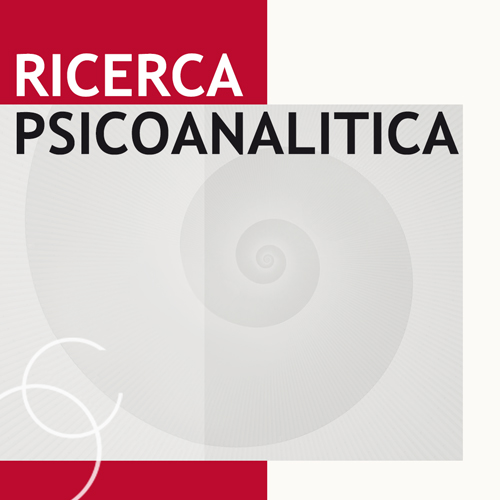New Perspectives on Symptoms and Symbols in the Case of Clara and Their Role in the Treatment Process

All claims expressed in this article are solely those of the authors and do not necessarily represent those of their affiliated organizations, or those of the publisher, the editors and the reviewers. Any product that may be evaluated in this article or claim that may be made by its manufacturer is not guaranteed or endorsed by the publisher.
The treatment of Clara as described by Dr Marina Amore provides new insights into the role of somatic functions in the development of emotional disorders and in the therapeutic communication. According to the theory of the referential process, descriptions of specific bodily experiences may function to build connections to the symbolic and verbal mode when narratives involving people and events of life are not accessible. During the 10 years of treatment, Clara"s reports of her severe neuralgic symptoms, and her bodily as well as emotional experience in her interactions with Dr. Amore enabled her eventually to talk about past and present experiences with her parents and others, and to rebuild emotion schemas that had been dissociated. Dr. Amore"s own bodily feelings in her interactions with Clara guided her in the therapeutic work, and also opened new understanding of experiences in her own life. The referential process can be seen as playing out in depth between and within the two participants as they recognized Clara"s growth, and also worked to resolve their sense of loss in the termination phase.
Amore, M. (2012). Clinical Scenarios of "Remembering": Somatic States as a Process of Emerging Memory. Psychoanalytic Dialogues: The International Journal of Relational Perspectives, 22(2), 238-252. DOI: https://doi.org/10.1080/10481885.2012.666149
Auchincloss, E. L., & E. Samberg (Eds.) (2012). Psychoanalytic Terms and Concepts. London: Yale University Press.
Bartlett, F. C. (1932). Remembering: A study in social psychology. Cambridge: Cambridge University Press.
Bowlby, J. (1969). Attachment and loss: Vol. 1. Attachment. New York, NY: Basic Books.
Bucci, W. (1997). Symptoms and symbols. A multiple code theory of somatization. Psychoanalytic Inquiry, 17, 151-172. DOI: https://doi.org/10.1080/07351699709534117
Bucci, W. (2001). Pathways of emotional communication. Psychoanalytic Inquiry, 20, 40-70. DOI: https://doi.org/10.1080/07351692109348923
Bucci, W. (2002). The referential process, consciousness, and the sense of self. Psychoanalytic Inquiry, 22, 766-793. DOI: https://doi.org/10.1080/07351692209349017
Bucci, W. (2007a). Dissociation from the perspective of multiple code theory: Part I; Psychological roots and implications for psychoanalytic treatment. Contemporary Psychoanalysis, 43, 165-184. DOI: https://doi.org/10.1080/00107530.2007.10745903
Bucci, W. (2007b). Dissociation from the perspective of multiple code theory: Part II; The spectrum of dissociative processes in the psychoanalytic relationship. Contemporary Psychoanalysis, 43, 305-326. DOI: https://doi.org/10.1080/00107530.2007.10745912
Bucci, W. (2011a). The role of subjectivity and intersubjectivity in the reconstruction of dissociated schemas. Converging perspectives from psychoanalysis, cognitive science and affective neuroscience. Psychoanalytic Psychology, 28, 247-266. DOI: https://doi.org/10.1037/a0023170
Bucci, W. (2011b). The interplay of subsymbolic and symbolic processes in psychoanalytic treatment: It takes two to tango - but who knows the steps, who"s the leader? The choreography of the psychoanalytic interchange. Psychoanalytic Dialogues, 21, 45-54. DOI: https://doi.org/10.1080/10481885.2011.545326
Bucci, W. (2013). The referential process as a common factor across treatment modalities. Research in Psychotherapy: Psychopathology, Process and Outcome, 16, 16-23. DOI: https://doi.org/10.4081/ripppo.2013.86
Damasio, A. R. (1999). The feeling of what happens. San Diego, CA: Harcourt Brace.
Freud, S. (1899). Screen memories. Standard Edition, 3, 301.
Freud, S. (1905). Three essays on the theory of sexuality. Standard Edition, 7, 123-246
Freud, S. (1912). The dynamics of transference. Standard Edition, 12, 97-108.
Gallese, V., L. Fadiga, L. Fogassi, & G. Rizzolatti, G. (1996). Action recognition in the premotor cortex. Brain, 119, 593-609. DOI: https://doi.org/10.1093/brain/119.2.593
Keysers, C. (2011). The empathic brain. Cambridge, MA: Social Brain Press.
Keysers, C. & V. Gazzola. (2009). Expanding the mirror: Vicarious activity for actions, emotions and sensations. Current Opinions in Neurobiology, 19, 666-671. DOI: https://doi.org/10.1016/j.conb.2009.10.006
Kris, E. (1956). On some vicissitudes of insight in psychoanalysis. International Journal of Psychoanalysis, 37, 445-455.
McEwen, B. S. & Seeman, T. (2003). Stress and affect: Applicability of the concepts of allostasis and allostatic load. In R. J. Davidson, K. R. Scherer, and H. H. Goldsmith (Eds.), Handbook of affective sciences (pp. 1117-1137). Oxford: Oxford University Press.
Pessoa, L. (2008). On the relationship between emotion and cognition. Nature Reviews Neuroscience, 9, 148-158. DOI: https://doi.org/10.1038/nrn2317
Piaget, J. (1936). Origins of intelligence in the child. Londra: Routledge & Kegan Paul.
Selye, H. (1950). Stress and the general adaptation syndrome. British Medical Journal, 1(4667), 1383-1392. DOI: https://doi.org/10.1136/bmj.1.4667.1383
Singer, T., & Frith, C. D. (2005). The painful side of empathy. Nature Neuroscience, 8, 845-846. DOI: https://doi.org/10.1038/nn0705-845
Stern, D. N. (1985). The interpersonal world of the infant. New York, NY: Basic Books.
Wicker, B., Keysers, C., Plailly, Royet, J. P., Gallese, V., & Rizzolatti, G. (2003). Both of us disgusted in my insula: The common neural basis of seeing and feeling disgust. Neuron, 40, 655-664. DOI: https://doi.org/10.1016/S0896-6273(03)00679-2
PAGEPress has chosen to apply the Creative Commons Attribution NonCommercial 4.0 International License (CC BY-NC 4.0) to all manuscripts to be published.


 https://doi.org/10.4081/rp.2021.291
https://doi.org/10.4081/rp.2021.291





